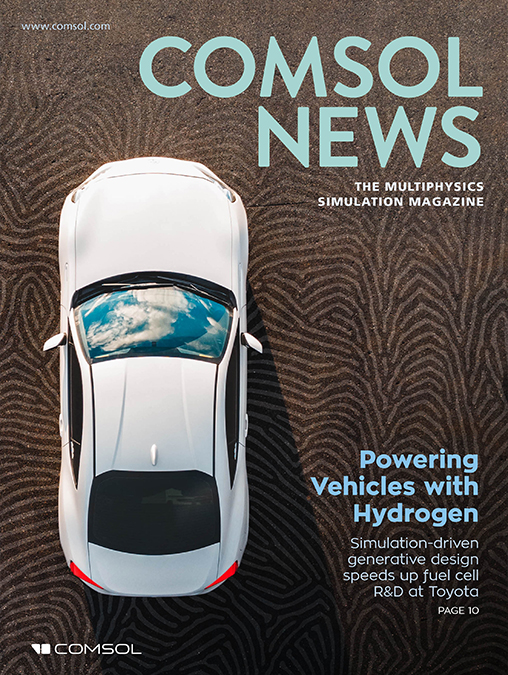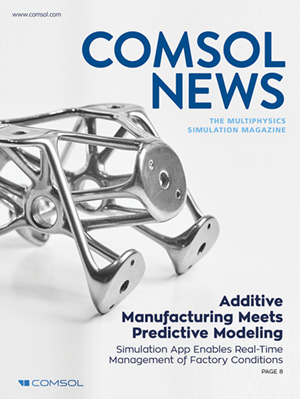- COMSOL News 2025
- COMSOL News Special Edition: Food Industry
- COMSOL News 2023
- COMSOL News 2022
- COMSOL News 2021
The latest stories from COMSOL users are available in COMSOL News and Multiphysics Simulation.
IAV developed an approach for combining sodium-ion and solid-state lithium iron phosphate battery technologies to form a less expensive and more ecofriendly system that can handle EVs. Read More
Toyota Research Institute of North America (TRINA) is working on hydrogen-powered vehicles. The TRINA team is using simulation to help speed up the R&D process for fuel cell flow field plates. Read More
India’s transportation sector is pursuing ambitious electrification goals, and so manufacturers must optimize battery management systems (BMS). Exicom uses multiphysics simulation to understand the thermal behavior of battery packs, which helps to calibrate vehicle BMS designs. Read More
Decaying seashells can release calcium carbonates, which help neutralize carbon dioxide in seawater. But ocean acidification threatens the shell formation process. Olivier Sulpis of Utrecht University has developed a novel reactive-transport model of deep-sea galvanization processes. Read More
Aluminum is extracted through the Hall–Héroult process, during which it is removed from bauxite using green anodes. A PhD student at Delft University of Technology, in collaboration with Aluchemie, is studying the design of the anode baking process using numerical simulation. Read More
At Canadian Nuclear Laboratories, multiphysics simulation is used to gain insight into the behavior of nuclear fuel inside of a reactor, and it will ultimately be used to improve the efficiency and safety of such systems. By including and coupling mechanical, thermal, fluid, and chemical ... Read More
To achieve fuel efficiency goals, conventional materials for car structures, such as structural steel, must be combined with lighter materials, such as aluminum. Scientists at the National Research Council Canada (NRC) develop corrosion-resistant multimaterial assemblies containing both ... Read More
VDEh-Betriebsforschungsinstitut (BFI) is one of Europe’s leading research institutions in the development of iron- and steelmaking technology. As steel production entails a lengthy chain of processes, improvements in quality and efficiency are often the focus of their research. A ... Read More
Amgen, a leading multinational biopharmaceutical company, produces various drug products that have treated serious illnesses in millions of people around the world. Behind every product is a plethora of processes, and a diverse portfolio of simulation tools is needed to ensure drug ... Read More
Inefficient and potentially harmful diesel generators are still the prevailing method of decentralized power generation for telecommunications in urban and rural India. Researchers at the National Chemical Laboratory are investigating proton exchange membrane (PEM) fuel cells, which are ... Read More













